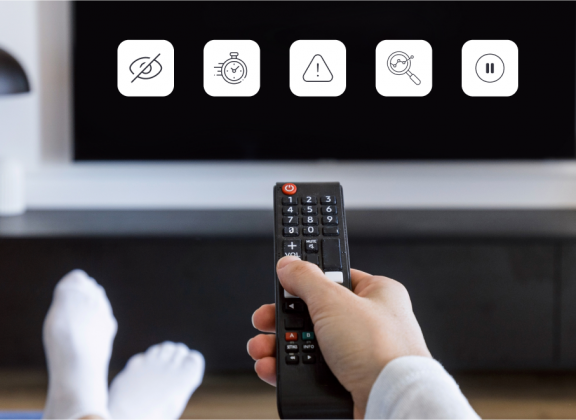The modern living room has transformed into a multimedia hub. With IPTV set-top boxes and advanced media players, we have immediate access to movies, series, live channels, and streaming services. While this evolution has redefined convenience and choice, it has also introduced a subtle challenge—maintaining a healthy balance between entertainment and wellbeing. Excessive TV viewing often goes unnoticed, yet it impacts physical health, mental focus, and family routines. This is where digital wellbeing for TV becomes an essential consideration rather than an afterthought.
The term “digital wellbeing” originally gained traction in the context of smartphones, but its relevance to television is undeniable. The binge-friendly nature of streaming platforms, coupled with personalized recommendations, makes it easier than ever to spend long hours in front of the screen. Although this may feel like a harmless indulgence, unregulated viewing habits can contribute to disrupted sleep patterns, reduced productivity, and diminished real-world interactions. Understanding how to track and control screen time is the first step toward building a healthier viewing culture at home.
Why Awareness Is the First Line of Defense
Most viewers underestimate their actual screen time because television viewing feels passive and relaxing. Yet, prolonged exposure can influence lifestyle choices and even mental wellbeing. Research links excessive viewing to sedentary behavior, eye fatigue, and lowered engagement in physical or social activities. This makes awareness an essential component of digital wellbeing.
Modern IPTV devices now offer built-in analytics to reveal accurate viewing metrics. These insights often include session duration, peak viewing hours, and preferred content types. With access to such data, users can identify patterns they would otherwise overlook—such as late-night marathons or repetitive news cycles. Awareness turns the abstract idea of “too much screen time” into something measurable and actionable. Once the numbers are visible, it becomes easier to adjust habits and set clear objectives.
Setting Limits: From Intent to Action
Knowledge without action rarely leads to change. After identifying viewing trends, the next logical step is implementing screen time limits. The purpose of these restrictions is not to eliminate entertainment but to encourage intentional, time-conscious consumption. Similar to how wearable fitness devices nudge users toward healthier routines, screen time controls on IPTV systems create boundaries that support mindful usage.
Most modern media players allow users to define daily or weekly thresholds. Once those limits are reached, the system can alert the user or lock content until the next cycle. These interventions help prevent overconsumption by introducing a natural break in viewing sessions. For families, especially those with children, such controls are invaluable. They ensure television remains a source of entertainment and learning without overshadowing other priorities like homework, physical activity, and family interaction.
Balancing Technology and Responsibility
The core appeal of IPTV and streaming technology lies in its convenience. Access to thousands of titles, live events, and apps at the click of a button creates an unmatched experience. However, with limitless choice comes the risk of overindulgence. Digital wellbeing tools help users enjoy technology without becoming dependent on it. They are not restrictive measures but proactive solutions that enable viewers to stay in control of their habits.
Retailers and device manufacturers should emphasize these features as part of a responsible technology strategy. Consumers increasingly value health-conscious solutions, and integrating intuitive wellbeing functions into set-top boxes is both a competitive advantage and a social responsibility.
The Next Step: Smarter Wellbeing Features
As personalization becomes central to entertainment technology, digital wellbeing tools will evolve. Future IPTV systems are likely to use AI-driven suggestions, encouraging breaks or recommending alternative activities. Instead of simply enforcing limits, these tools will act as virtual assistants—helping users maintain a healthy balance through adaptive, context-aware interactions.
For now, the formula for healthier viewing is straightforward: understand your habits, use the available tools, and establish practical limits. These simple steps transform television from a passive time sink into a purposeful experience that fits seamlessly into a balanced lifestyle.
Digital wellbeing for TV is about conscious engagement in an environment designed for constant entertainment. With modern tools for tracking and limiting screen time, IPTV devices offer everything needed to create healthier routines. It’s not about watching less—it’s about watching smarter. By taking control of your viewing habits today, you ensure that your screen serves you, not the other way around.
